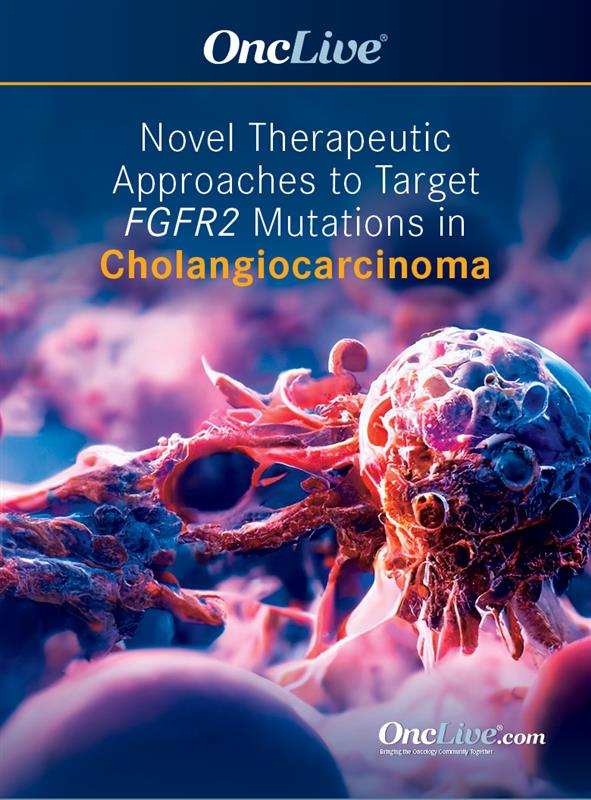Dr Kim on the Investigation of RLY-4008 in FGFR2+ Cholangiocarcinoma
Richard Kim, MD, discusses the investigation of RLY-4008 for the treatment of patients with cholangiocarcinoma harboring an FGFR2 fusion or rearrangement.
Richard Kim, MD, service chief, Medical Gastrointestinal Oncology, senior member, professor, the Gastrointestinal Oncology Department, Moffitt Cancer Center, discusses the investigation of RLY-4008 for the treatment of patients with cholangiocarcinoma harboring an FGFR2 fusion or rearrangement.
RLY-4008 is a highly selective, irreversible FGFR2 inhibitor currently under evaluation in the phase 1/2 REFOCUS trial (NCT04526106). Preliminary data reported at the 2022 ESMO Congress showed that patients with FGFR inhibitor–naïve cholangiocarcinoma who had an FGFR2 fusion or rearrangement (n = 17) experienced an overall response rate of 88.2%.
The FGFR inhibitors pemigatinib (Pemazyre), infigratinib (Truseltiq), and futibatinib (Lytgobi) previously received FDA approval for the treatment of patients with locally advanced or metastatic cholangiocarcinoma harboring an FGFR2 fusion or rearrangement, although the production of infigratinib was discontinued in November 2022. These agents are pan-FGFR inhibitors, Kim notes, explaining that they bind to FGFR1, FGFR2, FGFR3, and potentially FGFR4.
Notably, RLY-4008 is designed to bind only to FGFR2, which could mitigate some of the toxicities associated with the inhibition of FGFR1, FGFR3, and FGFR4, Kim details. For example, FGFR1 is responsible for homeostasis of the phosphate in the kidneys, and by blocking FGFR1, patients could experience hypophosphatemia. Additionally, blocking FGFR4 could lead to gastrointestinal toxicity.
By exclusively binding to FGFR2, RLY-4008 could deliver efficacy and spare patients from off-target adverse effects (AEs) associated with the inhibition of FGFR1, FGFR3, and FGFR4, Kim adds. However, the inhibition of FGFR2 is associated with its own unique toxicities, which could include ocular AEs and skin AEs, including reactions on the nails, hands, and feet, Kim concludes.




